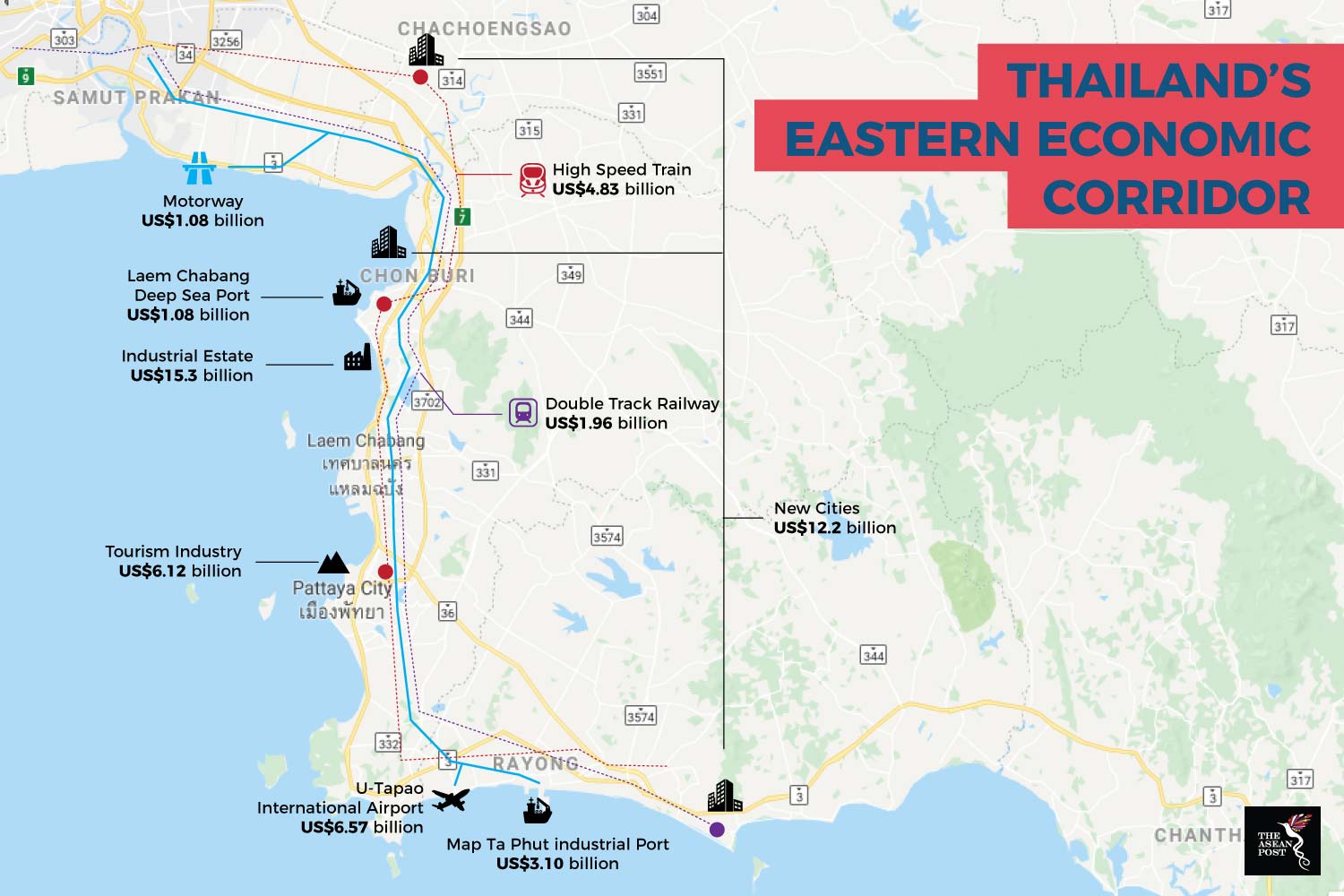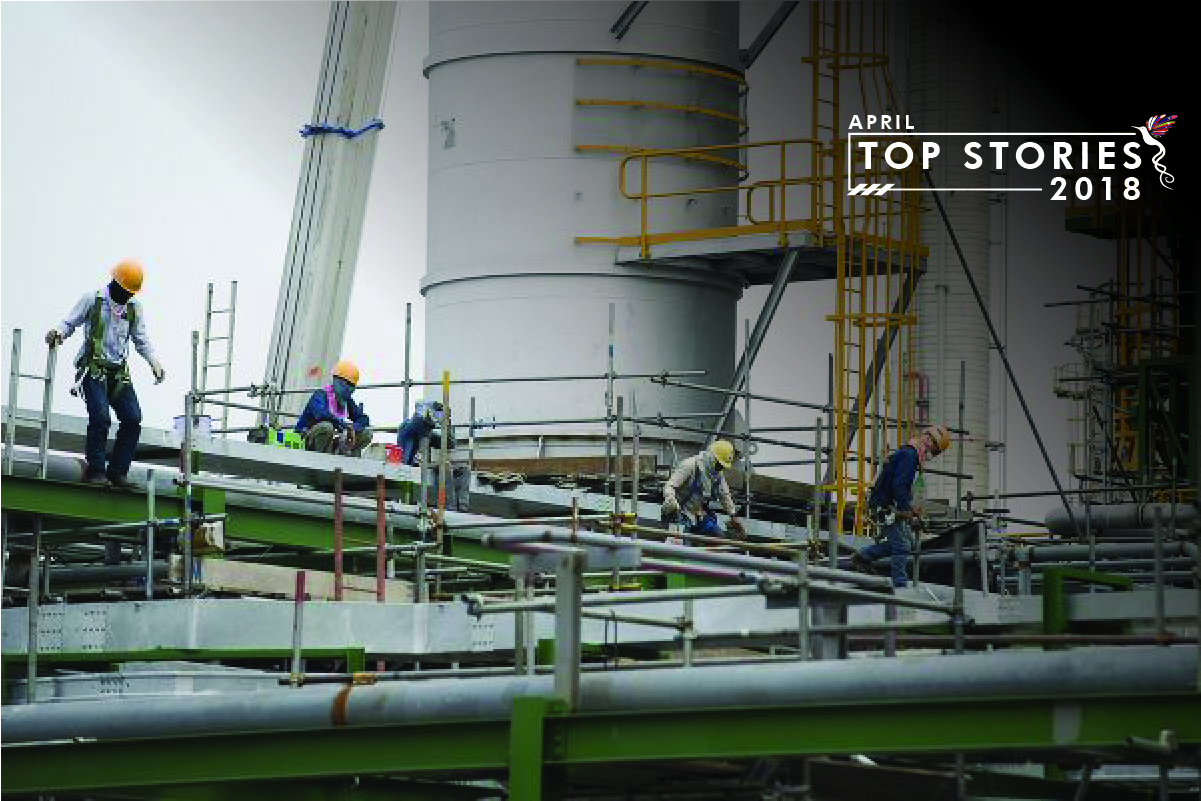The seaside province of Rayong, located on Thailand’s eastern gulf coast is well known for its tranquil holiday beaches, crystal clear waters and a dazzling selection of fresh tropical fruits from nearby fruit orchards. The picturesque town is the perfect place for a weekend’s escapade – 180 kilometres from the hustle and bustle of Bangkok or just a two and half hour drive away.
However, Rayong may not be a getaway from the fast-paced urban lifestyle for much longer. It is on the cusp of new developments which are expected to turn it into a commercial centre point for the country and perhaps the entire region.
Under the Thai government’s economic agenda, Rayong, and two other neighbouring provinces, Chonburi and Chachoengsao will form the Eastern Economic Corridor (EEC). Stretching a total area of 13,000 square kilometres, it is expected that the EEC will be an arterial node for trade, investment, and regional transportation, besides also serving as a strategic gateway to this region. It is part of the overarching Thailand 4.0 development plan which aims to transform the Thai economy into Southeast Asia’s engine of growth and propel the country towards becoming a high-income nation by 2036.
The EEC is slated to attract approcimately US$46 billion in investments which is projected to push Thailand’s gross domestic product (GDP) growth by five percent annually by 2020. It is anticipated to attract investments in the targeted “S-curve” industries – namely, next generation automotive, aviation and logistics, smart electronics, medical tourism, food, robotics, agriculture and biotechnology. Investments in these industries will heavily improve connectivity and cultivate innovation in the Land of Smiles.
According to the EEC’s official data, so far, 259 direct investments in the EEC region totalling close to US$10 billion have been approved with 133 projects in Chonburi valued at US$3.8 billion, 93 projects in Rayong valued at US$5.2 billion and 33 projects in Chachoengsao valued at US$970 million. Major projects in the EEC over the next five years include the dual-tracking of existing rail connection to the town of Map Tha Put where Thailand’s largest industrial park is located (US$1.8 billion), the expansion of the Laem Chabang deep sea port (US$2.5 billion), a high speed train from Bangkok to Rayong, the development of an international airport in Rayong (US$5.7 billion) and the upgrading of a port (US$300 million) in Rayong.
 Source: Various
Source: Various
To ensure the success of the EEC, Bangkok is relying heavily on foreign direct investments and public-private partnerships. At a recent seminar on addressing investment opportunities in Thailand, Kobsak Pootrakool, Thai cabinet minister in charge of the nation’s Board of Investment (BOI), expressed his intentions for close cooperation amongst various stakeholders to ensure the success of the EEC and the country’s other economic ambitions.
“On behalf of the government I invite all of you to work together and transform the Thai economy by bringing Thailand out of the middle-income trap and achieving sustainable economic growth in the future,” he remarked.
To sweeten the deal, the Thai government has relaxed certain laws and regulations to facilitate and encourage foreign investors looking to invest in the EEC’s initiatives. These include, zero percent corporate income tax for up to 15 years, exemption from existing foreign land ownership restrictions, long-term land lease agreements up to 99 years for commercial and industrial areas, five-year business visas, and a personal income tax rate cap at 15 percent.
Thus far, the EEC has piqued the interest of investors from China and Japan. The EEC is also being touted as a complement development corridor to China’s multi trillion-dollar Belt Road Initiative. The symbiotic gains from such a venture cannot be fully estimated yet. However, the Thai government in 2016, raised the possibility of connecting the EEC to the China-Indochina Peninsula Economic Corridor (CICPEC).
Thailand is on track to realising its economic ambitions. The EEC is one of many initiatives by the Thai government to attract investments and position the country as the leading commercial hub in the region. It certainly opens up a myriad of opportunities for investors and given Thailand’s positive growth projections for the year, it doesn’t seem like too bad of an investment decision to make.
Articles selected as Top Stories of 2018 are those that were the most popular among readers of The ASEAN Post for the month in question.
Related articles:
